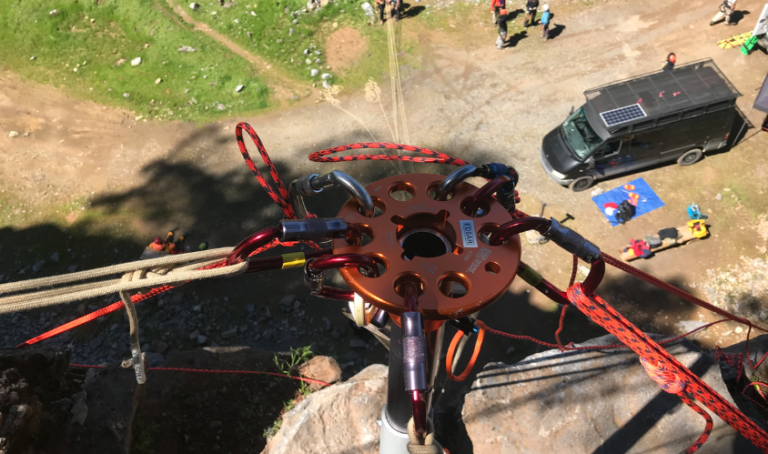Pre-plan the Working Line
All too often, teams rig their haul system with the progress capture device (the ratchet) at a directional anchor located in front of the mechanical advantage system. This ratchet position is most often due to the lack of pre-planning the layout of the working/haul line system.
Usually, the rigger will build the braking system for lowering at the anchor most inline with the fall line. Typically, this anchor is too close to the edge and offers a very small throw for the soon to become a haul system. To overcome this problem the team will then look for another anchor that will provide a longer throw and hauling field beyond, or to the side of the first anchor.
One problem leads to another. The working line, now in need of a hot change-over, (going from a lowering to a raise under tension) has only one place the brake system (lowering) can be replaced with a ratchet (raising). This is at the original anchor, the one closest to the edge, the one that is now a forward directional for the haul system.
CLICK HERE FOR MORE IN DEPTH REVIEW OF MAINLINE SYSTEMS
There are some inherent problems with a ratchet that is in front of the MA. During the re-set phase of the haul, the rope behind the haul rope grab device is always slack, making for sloppy re-sets, but even more problematic, is the ebb and flow, back and forth movement of the directional anchor that occurs between re-sets and even at every tug of the rope. At best, this type of inefficient system mandates a back-tie that opposes the haul team.
As a result of this ebb and flow movement, the continual change in the force vector of the directional anchor gives us great concern as to the integrity of the anchor. Keep in mind when looking at the drawings below, the static weight of the load at the directional anchor (non-moving, with equal tension on both sides of the directional pulley) is approximately 141% greater after the conversion to a raising system than it was during the lowering. The anchor stress will always be substantially greater during a haul than during a lowering. When choosing an anchor for a lowering system, we must build it strong enough to withstand the forces generated by the raising system that we will be going to later.
What is the friction profile of the edge? Are we making a 90-degree turn over sandstone or granite, or are we utilizing a high directional? During a raise, a 90-degree turn over a rock surface will ad over 3x the weight of the load at the edge. Using the force vector formula on page 114, one can quickly see the potential for a catastrophic failure of an underestimated directional anchor. The problem is magnified when the ratchet is put at the forward position, this constant change of low tension to high tension and back again is what has been the downfall of many anchors.
The solution to this problem is very simple, pre-plan the best location for the future haul system and ratchet and put the braking device for the lowering at that position from the start.
Peace on your Days
Lance










